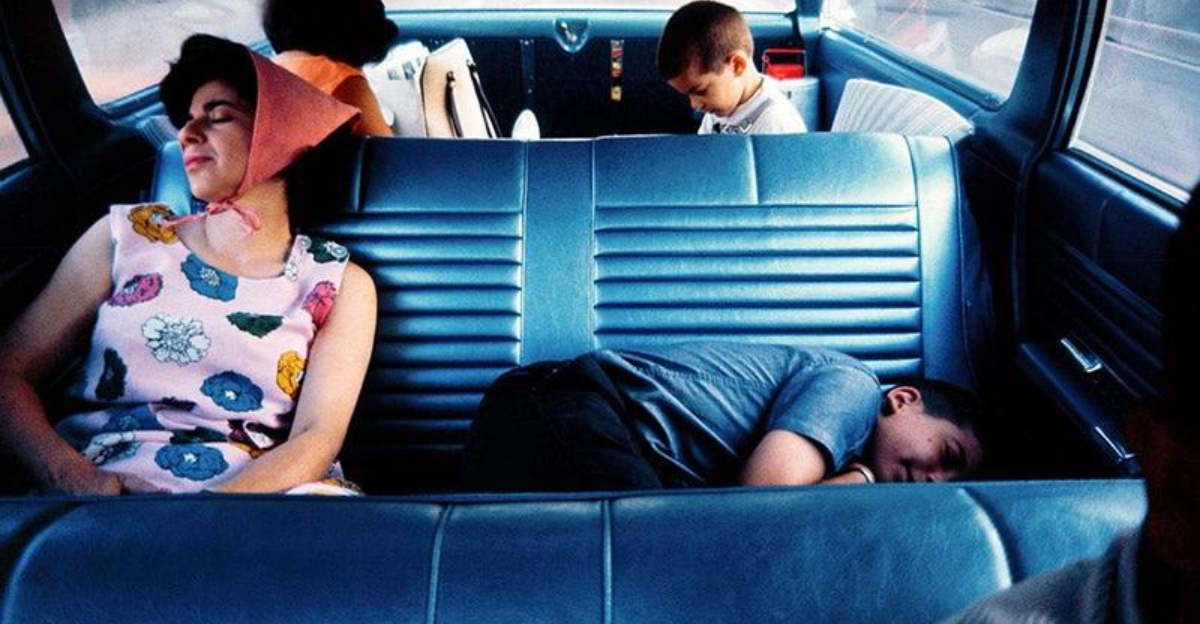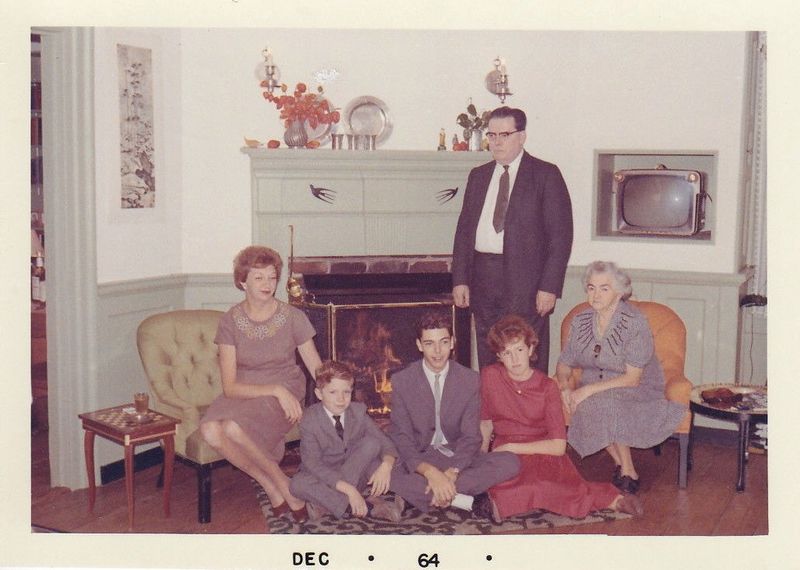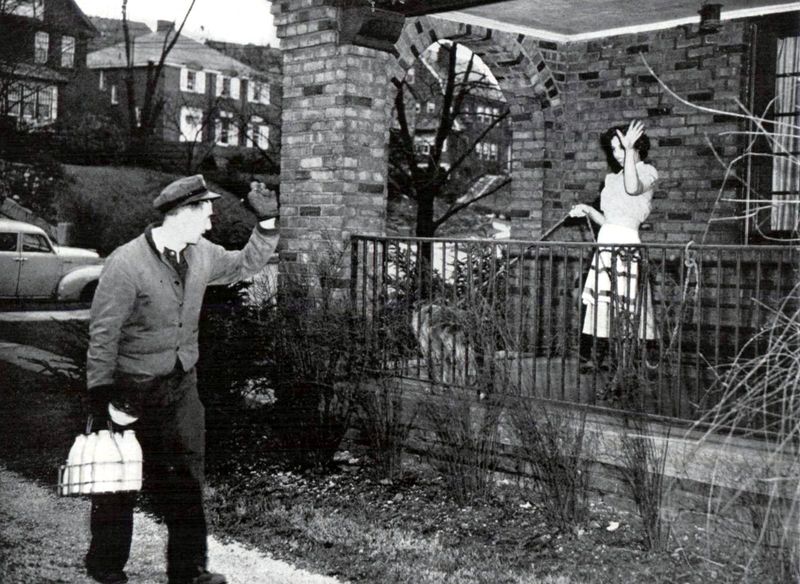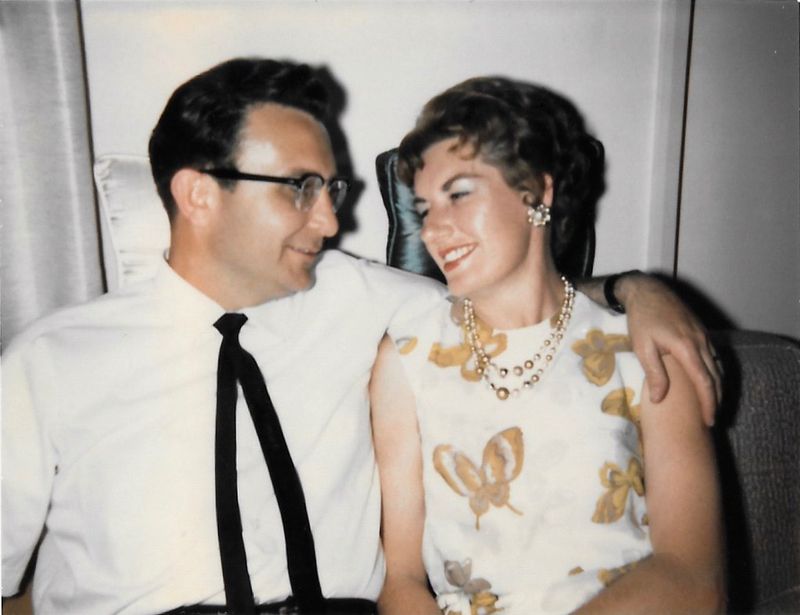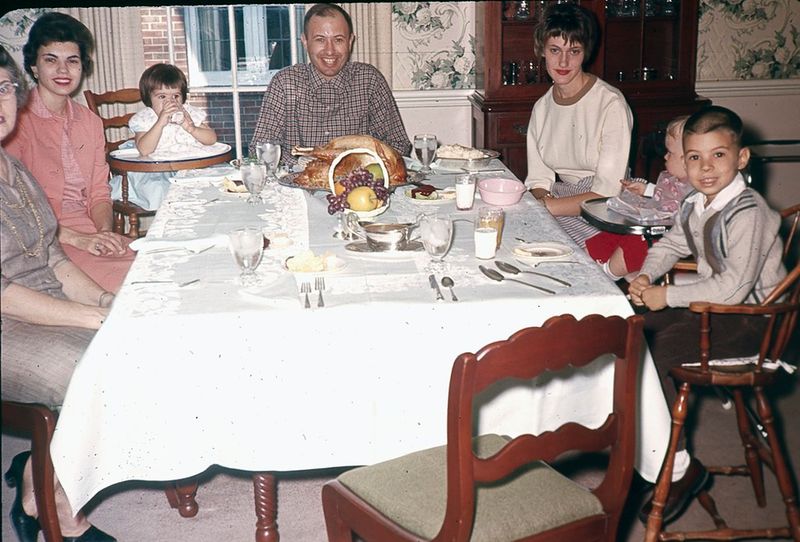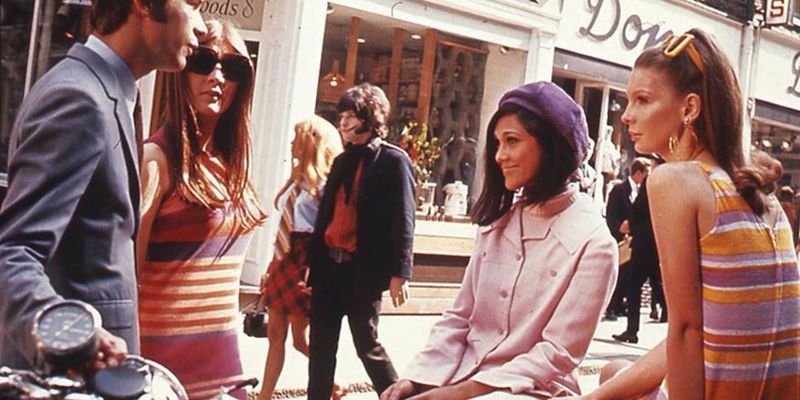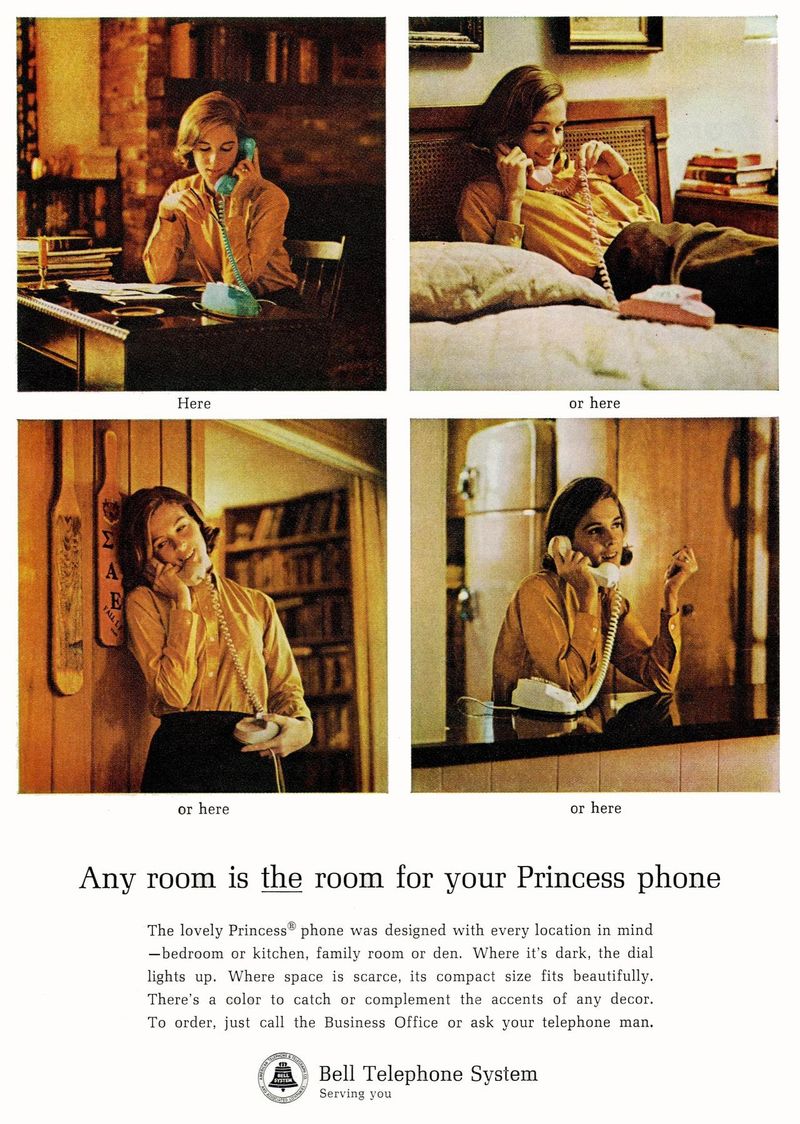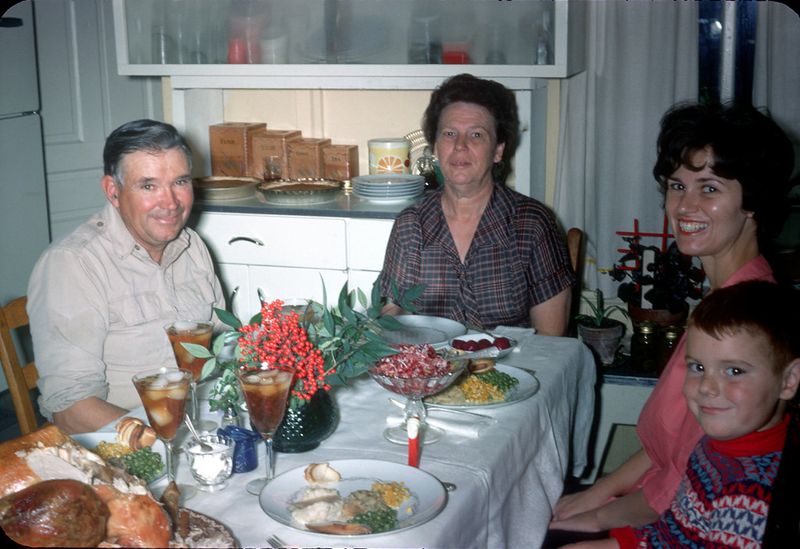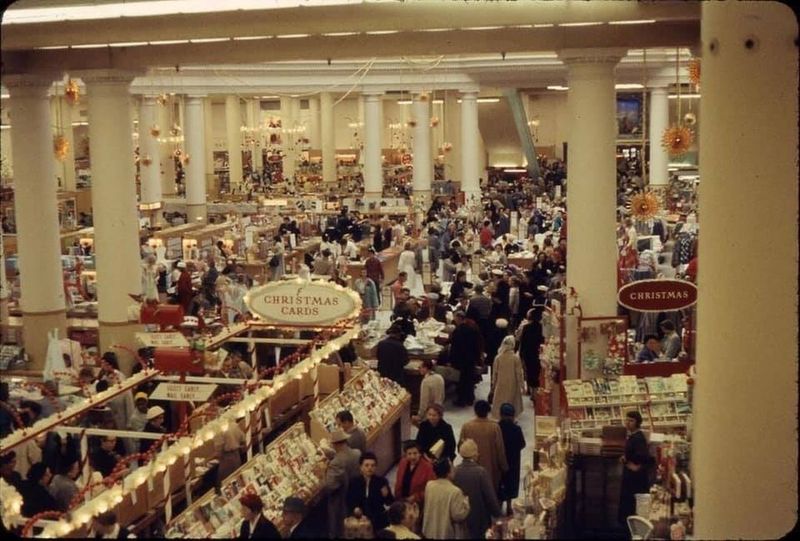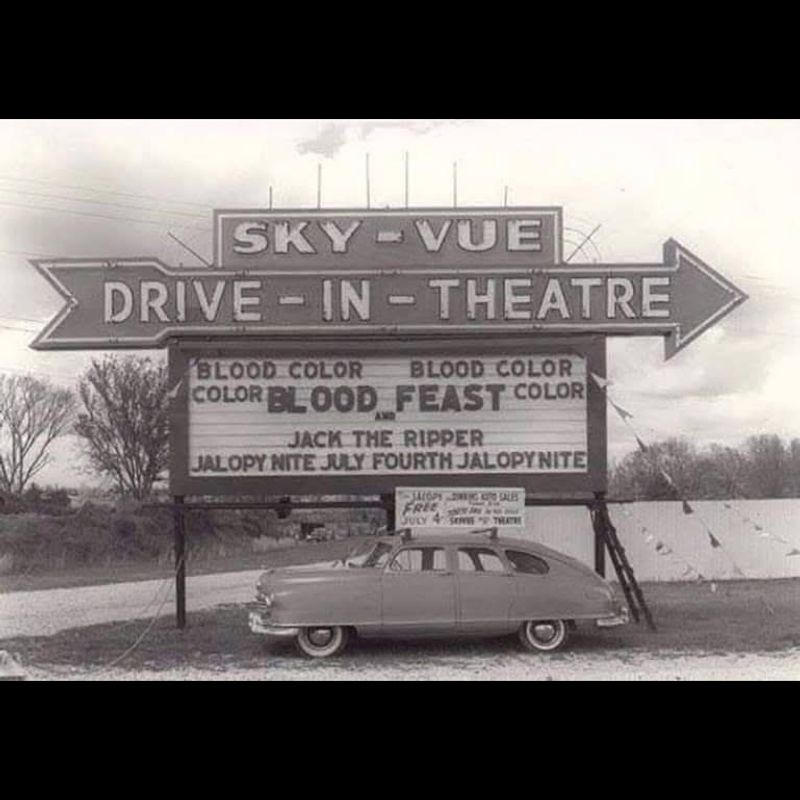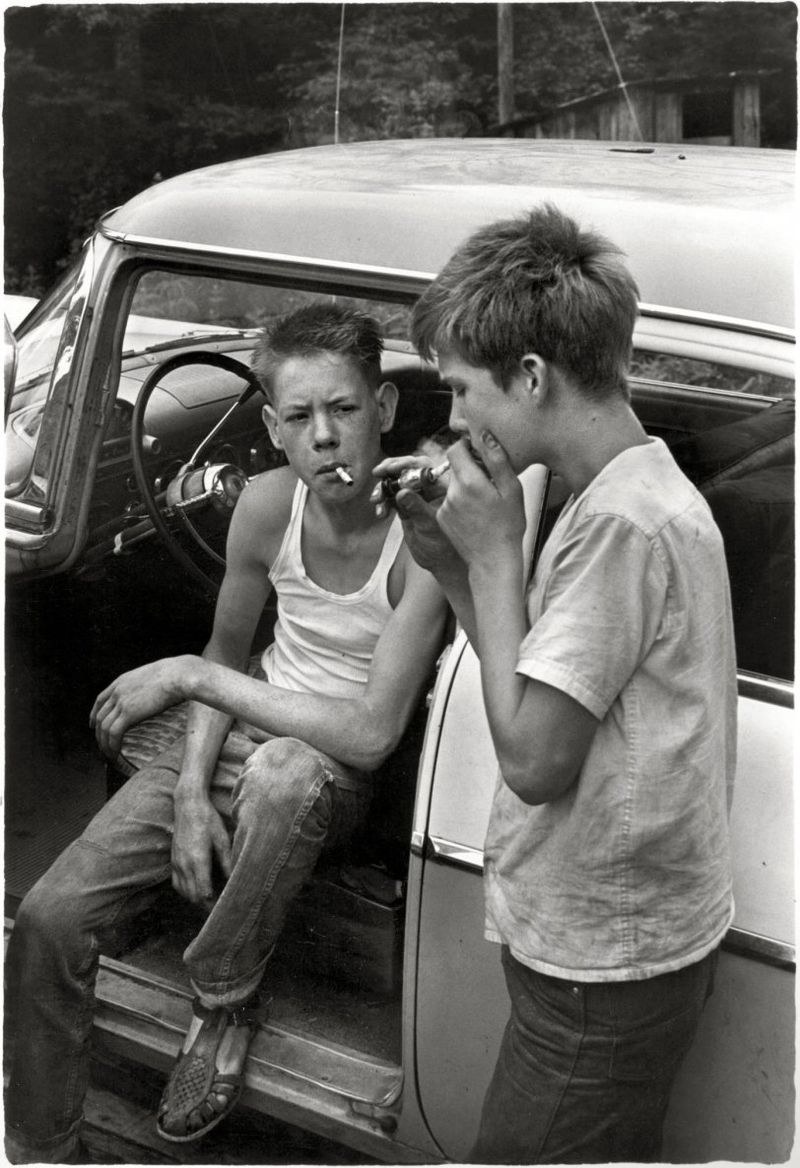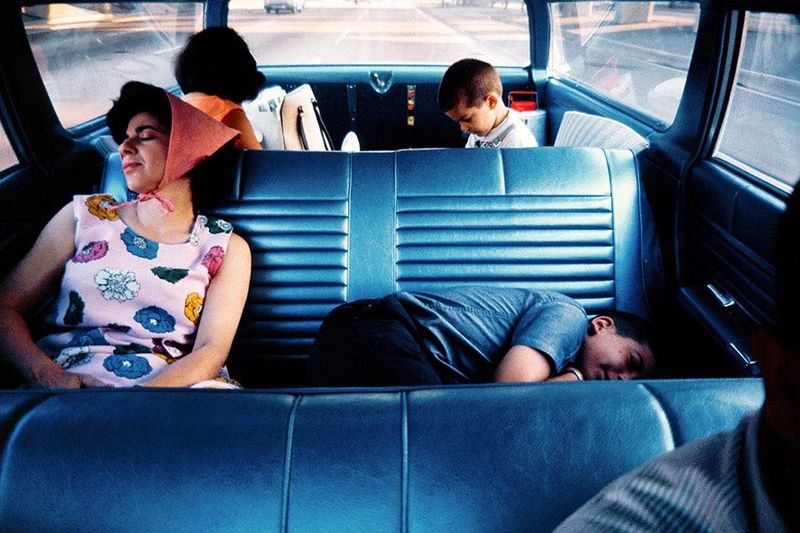Explore the vivid tapestry of life in 1964 through these fifteen captivating snapshots. Each image tells a unique story of a bygone era, where the charm of simplicity and community thrived. From the comforting presence of the milkman to the vibrant congregation at drive-in theaters, discover the essence of a time when technology was just beginning to peek into everyday life. As you journey through these images, you’ll see a world on the cusp of change, yet still deeply rooted in tradition and family values.
1. Most Homes Had a Single TV (and Only 3 Channels)
In 1964, families gathered around a single television, usually located in the living room. The evening lineup included popular shows on CBS, NBC, or ABC, like The Ed Sullivan Show or Gilligan’s Island. Television was a shared experience, fostering family bonding.
This era marked the golden age of television, with TV sets becoming central to home life. The lack of remote controls meant that someone had to get up to change the channel, adding to the communal experience.
For many families, watching TV was a ritual, bringing everyone together to laugh, cry, or cheer on their favorite characters.
2. Milk Was Delivered to Your Doorstep
In the 1960s, the milkman was a familiar presence in neighborhoods. Clad in a crisp white uniform, he delivered glass milk bottles to homes, leaving them in insulated boxes on porches.
This service was slowly fading as supermarkets expanded, but in 1964, it was still a common sight. The clinking of glass bottles in the early morning became a comforting sound for many.
Milk delivery represented a personal touch in consumer services, creating a sense of community. It was more than convenience; it was a ritual that connected people, even as modern retail began to take over.
3. Housewives Were the Norm
In 1964, the typical household dynamic involved Dad going to work while Mom stayed home. Housewives managed the household, from cooking meals to cleaning, embodying the ideal of being “put together” even during housework.
Women in this era were expected to be adept homemakers, often thriving in the role while society placed significant value on domesticity.
This period reflected a time when gender roles were clearly defined, and a woman’s identity was largely tied to her home and family. Despite the limitations, many women found creative ways to express themselves and their individuality within these norms.
4. Sunday Dinners Were Sacred
Sunday dinners in 1964 were a cherished tradition, with families gathering around the table to enjoy meals like roast beef, mashed potatoes, or Jell-O salads.
These meals were often served on special china, emphasizing the importance of this weekly ritual. It was a time for families to reconnect, share stories, and enjoy each other’s company.
The practice reflected the era’s emphasis on family unity and the significance of shared meals. Sunday dinners served as a moment of respite, allowing families to pause and appreciate the simple pleasures of good food and togetherness.
5. Kids Played Outside Until Dark
Without smartphones or tablets, children in 1964 spent their afternoons riding bikes, playing tag, or building forts outside.
Parents trusted their kids to explore and learn through play, calling them in only when it was time to come home. This freedom fostered creativity and independence, allowing kids to develop social skills naturally.
These outdoor adventures were often unsupervised, encouraging a sense of adventure and resilience. Friendships were forged in the playgrounds and backyards, creating lasting memories of carefree days spent in the sun.
6. You Dressed Up to Go Anywhere
In 1964, dressing up was customary for any outing, whether it was a trip to the grocery store or a stroll downtown.
Men wore hats and ties, while women donned dresses and gloves. This attention to appearance reflected the societal norms of the time, where formality was equated with respectability.
Public appearances called for polished presentations, and sweatpants in public would have been unthinkable. This cultural emphasis on style and presentation added a certain elegance to daily life, making every outing a special occasion.
7. Phones Were Rotary—and Tethered
The rotary phone was a staple in 1964 homes, tethered to the wall and shared by the entire household.
Dialing required patience as each number had to be carefully turned, and memorizing phone numbers was essential. If someone else was using the phone, you simply had to wait your turn.
This shared communication tool was integral to family dynamics, serving as a lifeline to the outside world. The limitations of the technology fostered patience and turn-taking, providing a unique bond between family members as they navigated their social lives.
8. Dinner Was Often From a Can or Box
Convenience foods gained popularity in 1964, with TV dinners, Spam, and Jell-O molds becoming household staples.
These items represented modernity and efficiency, freeing up time for families. The futuristic appeal of brightly colored packaging made these meals an exciting novelty.
Processed foods offered a glimpse into the future, where meals could be prepared quickly and with minimal effort. Despite debates over nutrition, they were embraced for the convenience they provided, marking a shift in how families approached dining.
9. Shopping Meant Downtown Department Stores
In 1964, shopping meant a trip to downtown department stores like Sears or Woolworth’s.
These bustling hubs were more than just places to shop; they were social venues where people gathered. Malls were beginning to emerge, but Main Street retained its charm.
Shopping was a sensory experience, with the sounds of bustling crowds and the possibility of finding a hidden gem. Department stores symbolized a blend of commerce and community, offering everything from clothing to home goods under one roof.
10. Newspapers Were Daily and Essential
In 1964, the daily newspaper was a staple in American households, arriving on doorsteps each morning.
Reading the paper with a cup of coffee was a ritual that helped people stay informed about world events. It was a shared activity, sparking discussions over breakfast.
The newspaper was more than just news; it was a connection to the wider world and a catalyst for family conversations. It fostered an informed public, contributing to the democratic process by encouraging readers to engage with current affairs.
11. Air Conditioning Was a Luxury
In 1964, only about 10% of U.S. homes had central air conditioning, making it a luxury.
To cope with the summer heat, families relied on fans, open windows, and shaded porches. These methods were both practical and community-oriented, as porches became gathering spots.
The challenge of staying cool encouraged creativity and resilience. The lack of air conditioning made people resourceful, utilizing nature’s cooling systems to maintain comfort during the sweltering summer months.
12. Church Attendance Was a Weekly Event
In 1964, church attendance was a cornerstone of community life, drawing families together each Sunday.
It was a time for spiritual reflection and social interaction. People dressed in their Sunday best, reinforcing the importance of the occasion.
Church services were often followed by potlucks or Sunday school, fostering a sense of belonging and community. This weekly ritual provided a moral compass and a sense of continuity for families, reinforcing societal values and offering a space for communal support.
13. Drive-Ins Were a Hot Date Night
Drive-in theaters were popular date spots in 1964, offering a unique cinematic experience under the stars.
Couples arrived in classic cars, tuned their radios to the movie’s frequency, and enjoyed popcorn together. The drive-in provided a casual and intimate setting, blending entertainment with romance.
This era saw drive-ins as a quintessential part of social life, especially in small towns. They represented freedom and a hint of rebellion, allowing young couples to enjoy a night out in a relaxed atmosphere.
14. Smoking Was Socially Expected
In 1964, smoking was ubiquitous, with adults lighting up at home, in offices, and even at school events.
Ashtrays were standard home decor, reflecting the social acceptance of smoking. It was considered sophisticated and normal, with little awareness of health risks.
This period marked a time when tobacco companies wielded significant influence, and smoking was intertwined with daily life. The casual integration of smoking into social settings highlighted the era’s cultural norms, which would soon be challenged by emerging health studies.
15. Families Traveled in Station Wagons
Family vacations in 1964 often meant road trips in spacious station wagons, iconic for their wood-paneled sides.
These journeys were part of the adventure, with kids playing in the back seat and families relying on paper maps to navigate. Seat belts were rare, and the open road beckoned with promises of discovery.
Station wagons symbolized freedom and family togetherness, embodying the spirit of exploration. They made travel accessible and affordable, allowing families to create cherished memories on the road.
